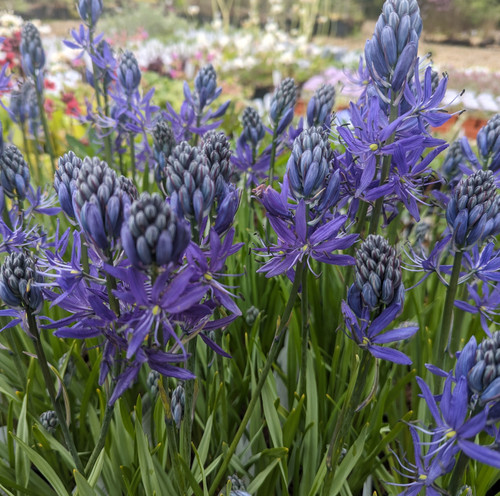Plant Overview
This is our native wild relation to the onion and garlic. Milder in taste and smell than cultivated garlic, it is a useful addition to dishes and salads. Lovely white flowers adorn the plants from April to June. Perennial and fully hardy.
Good for underplanting trees and shrubs. Will slowly colonise an area to create a carpet. Like Bluebells, Wild garlic is an ancient woodland indicator species.
This is sold in a 9cm pot but is also available as in-the-green bulbs in winter here.
Height: 25cm
Common names: Wild garlic; Ramsons; Badger's Flower; Cowleekes; Cows's leek; Cowleek; Buckrams; Broad-leaved garlic; Wood garlic Bear leek; Stinking Lilies; Eurasian wild garlic; Bear's garlic.
Ramsons is from the Saxon word hramsa, meaning 'garlic'. There is evidence it has been used in English cuisine since Celtic Britons over 1,500 years ago.
Cows love to eat them, hence the common names regarding cows. In Southern England, dairy farmers have occasionally had milk from their herds rejected because of the garlic flavour imparted to it by the cows after grazing upon the plant.
All parts of the Allium ursinum plant have culinary uses, including the flower which can be used to garnish salads.
The leaves of the Allium ursinum are the most popular part to be used in food. Leaves can be used in raw salads and carry a very subtle garlicky flavour similar to that of garlic chives. When picked the leaves bruise, making them smell even stronger. When cooked the flavour of the leaves becomes softer and sweeter.
The leaf is often chopped and used to replace garlic and other herbs in many recipes. The bulb can be used in a similar way to clove garlic.
Popular dishes using the plant include pesto, soups, pasta, cheese, scones and Devonnaise.
Please note: Wild Garlic is a spring bulbous plant. The foliage dies back to the ground in late spring and shoots again the following year. If you order it at any time other than early spring, the foliage will be either be dying back, or not showing. This is natural and not a problem!
Photo 1: Adrian Pingstone, Public domain, via Wikimedia Commons











